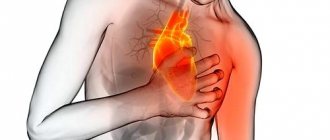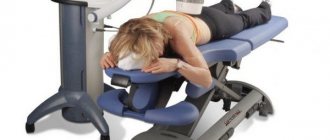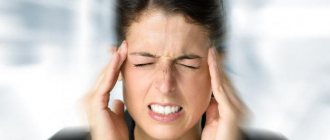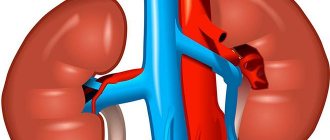When visiting a doctor, you can often hear complaints that the patient feels heaviness in the chest. This gives rise to reasonable concerns, because the symptom may indicate a serious pathology requiring medical intervention. But it is not so easy to say why an unpleasant feeling arises - a detailed examination is necessary.
The feeling of heaviness cannot be called normal. This is not pain yet, but it may become so with the further development of the pathological process. And it is important to find out in time what is wrong in the body. But only a doctor can do this, because the source of unpleasant symptoms can be pathology from various organs and systems:
- Lungs and pleura (pneumonia, tuberculosis, emphysema, pleurisy, hemo- and pneumothorax).
- Bronchi (bronchial asthma, obstructive disease).
- Heart (coronary disease, pericarditis, valve defects).
- Stomach and esophagus (reflux esophagitis, achalasia cardia, diaphragmatic hernia).
- Mediastinum (enlarged lymph nodes, tumors).
- Chest and spine (injuries, osteochondrosis, intervertebral hernia).
- Neuropsychic state (neuroses and depression).
Pain and heaviness in the chest is a fairly common situation, and it should not be ignored. Considering the multiple nature of the origin of this symptom, the examination process cannot do without a thorough differential diagnosis. By eliminating the possibility of some conditions, the existence of others is confirmed, and gradually the doctor identifies the source of discomfort in a particular patient.
The question of the origin of heaviness in the chest is not so simple, because there are quite a few reasons for this condition. But an experienced doctor will always figure out what’s going on.
Causes
Heaviness in the sternum is an unpleasant symptom that appears suddenly and can be felt for a long time. This clinical sign occurs in both adults and children. The physiological reasons for its appearance include:
- too active lifestyle;
- nervous and physical stress;
- lifting weights;
- wearing tight clothing that restricts movement and prevents you from breathing freely.
Symptoms
If heaviness in the chest area is caused by pathological reasons, it is always accompanied by other symptoms that can be used to make a preliminary diagnosis. In heart diseases the following are observed:
- burning behind the sternum;
- dyspnea;
- sudden increase or decrease in heart rate;
- feeling of lack of air;
- numbness of fingers;
- panic and severe fear (with myocardial infarction).
Often we have to deal with atypical forms of pathologies. This makes diagnosis very difficult and can even cost a person his life. For example, with myocardial infarction, vomiting, stomach pain, and diarrhea sometimes appear.
Symptomatic picture
Depending on the nature of the pathologies that cause chest pain, each of them has other symptomatic signs that make it possible to determine the true cause of this sensation:
- With cardiac pathologies, pain, as a rule, occurs suddenly, both directly behind the sternum and on the right or left side of the chest. It can radiate to the arm on the right or left, or to the scapula. The nature of the pain syndrome can be very diverse: sharp, dull, aching, pressing, stabbing, burning, burning in the chest, pressing. Also, the symptoms of most cardiac pathologies include yawning as a sign of hypoxia (oxygen starvation) and a feeling of lack of air caused by cardiac dysfunction, sudden changes in blood pressure. During a heart attack, a sharp dry cough may occur, as the heart expands sharply and the effect of pressure on the bronchi occurs. According to statistics, most often heart attacks leading to the development of a heart attack occur in the evening or at night.
- Inflammatory diseases of the bronchi or lungs that occur as a result of infection or cold, in addition to chest pain, are usually accompanied by a sharp increase in body temperature and disturbances in air exchange function: a person has difficulty breathing, when trying to take a deep breath or exhale, he coughs, when sneezing or coughing, he begins to prick in the side . Choking is also one of the main symptoms of an attack of bronchial asthma, when a person is unable to take a full breath due to swelling of the bronchi.
- Pathologies of the gastrointestinal tract are manifested by such symptoms as reflux - the rush of gastric acid from the stomach into the esophagus, which is characteristic of GERD, sour or bitter belching, nausea, chronic constipation, a burning sensation and pain in the pit of the stomach - with gastritis and stomach ulcers. When the cause of the pain is a tumor of the esophagus or a diaphragmatic hernia, the patient feels that he is nauseous, it is difficult to swallow, when swallowing, food gets stuck in a lump in the throat or in the sternum area, as if something is preventing the food from going into the stomach. In acute pancreatitis, the pain is localized to the left of the stomach, just below the ribs. Pressing on the abdomen causes a sharp increase in pain, radiating to the chest.
- In diseases of the spine, back pain intensifies from sudden movements, bending, turning the body or head. When the patient wakes up in the morning, he needs some time to bring his spine into working condition. By moving your neck, you can feel the vertebrae clicking. The cause of clicking is most often deformation of the intervertebral discs due to osteochondrosis.
Diagnostics
Heaviness in the chest can accompany very serious diseases, the diagnosis of which requires consultation with several specialists. At the initial stage, the doctor collects anamnesis, asks the patient in detail about his condition, the nature of the pain and its intensity. Primary research may be carried out:
- visual assessment of the condition of the skin;
- taking an electrocardiogram;
- heart rate measurement;
- blood pressure measurement;
- listening with a phonendoscope.
After assessing the patient’s condition, consultations with specialists may be recommended and additional studies may be prescribed:
- blood analysis;
- Analysis of urine;
- ultrasound and x-ray examinations (chest x-ray for severe cough);
- 24-hour heart rate monitoring;
- sputum analysis (for severe cough).
Depending on the result of the initial examination and the results of tests and studies, further treatment may be prescribed by the following specialists - cardiologist, psychiatrist, psychologist, traumatologist, pulmonologist, neurologist, pediatrician. If the diagnosis is not clear or there are questions about further treatment, a medical consultation may be appointed. Sometimes pathology has to be treated in a hospital.
When to see a doctor immediately
In some cases, if heaviness in the chest area appears, you should seek help immediately. Delay can cost a person his health and even his life. It is recommended to call a doctor immediately if:
- the pain is localized in the middle of the chest, on the right side or on the left side of the sternum, the discomfort is strong and does not go away after taking Nitroglycerin;
- it is difficult for a person to breathe, there is a lump in the throat, there is a feeling of expansion of the sternum when inhaling;
- the pain is accompanied by a strong cough and the appearance of blood from the respiratory tract;
- wheezing is heard when breathing;
- pain is accompanied by vomiting, nausea, tachycardia;
- a person loses consciousness;
- the pain feels like heartburn, but the usual heartburn pills do not help;
- there are signs of traumatic injuries to the chest.
What can hurt your chest?
The variety of reasons why the chest hurts and the complexity of the solution is explained by anatomy coupled with physiology. This osteochondral formation, an important element of the body’s defense, has the structure of a closed hollow space.
- ribs connected to the spinal column (12 thoracic vertebrae);
- the sternum, which protects vulnerable lungs, heart, liver, esophagus, and important arteries from injury and damage;
- muscular frame;
- the diaphragm, which plays a major role in the respiratory process;
- ligamentous apparatus.
Potentially, all of these organs and areas can be a source of pain. When analyzing what else can cause chest pain, you should remember the anatomical features of the female body and her reproductive system.
- physiological pain that occurs as a reaction of the nervous system in response to various stimuli that damage or destroy the glandular and connective tissue of the female breast. The mammary glands of a woman are abundantly penetrated with nerve fibers;
- breast diseases - oncology, infectious inflammation, fibrocystic diseases;
- cyclical changes in hormonal levels - during menopause or associated with the menstrual cycle (changes in the neurohumoral regulatory system, in the ovaries, uterus, and other internal genital organs);
- the onset of pregnancy;
- chest injuries, surgical interventions.
The term “mastalgia” is used to refer to a feeling of discomfort or pain localized in any part of the mammary gland. This collective concept is not a diagnosis, but a clinically significant symptom complex. Another reason why chest pain in men is gynecomastia, a benign enlargement of the mammary gland.
First aid for severe chest pain
If the feeling of heaviness in the chest occurs suddenly and intensifies over time, you need to take urgent measures before the doctor arrives:
- unbutton clothes that restrict movement and make breathing difficult;
- ensure a flow of fresh air into the room;
- put a Nitroglycerin tablet under the tongue (if there is a suspicion of a heart attack or acute pathology of the cardiovascular system);
- in case of severe pain, take an analgesic;
- take a comfortable semi-sitting position.
Important! For pain in the sternum, it is prohibited to apply mustard plasters or warm compresses to the upper body. This only helps with muscle strains and joint diseases. For fractures, bruises, and heart disease, performing such a procedure will lead to a deterioration in the patient’s condition.
The issue of self-administration of analgesics is controversial. Doctors believe that pain relief before the ambulance arrives can complicate the diagnosis. Medicines can be taken only if the pain is very severe and difficult to endure.
Treatment methods
Treatment for pain in the chest area is prescribed only after examination and diagnosis. If the discomfort is caused by physiological reasons, taking medications is not required. You just need to eliminate the provoking factor. For example, if the feeling of constriction is caused by wearing tight clothes, it is enough to refuse them. With mild drug overdose, chest pain usually also goes away with time. If discomfort is a sign of pathology, treatment is necessary.
Drug treatment
Medicines are prescribed by a doctor, taking into account the disease or disorder that caused the pain. For chest pain, the following may be prescribed:
- heart medications;
- drugs to lower blood pressure;
- anti-inflammatory drugs;
- sedatives or tranquilizers;
- non-narcotic painkillers.
For intercostal neuralgia, muscle relaxants (muscle relaxants) may be recommended along with hormonal therapy. If the pain is caused by diseases of the joints and spine, drugs that improve blood circulation, as well as anti-inflammatory painkillers (Diclofenac, Ibuprofen), are prescribed. Glycosides, drugs for lowering blood pressure and drugs that normalize heart rhythm are prescribed for diseases of the heart and blood vessels.
Physiotherapy and traditional methods
Along with medications, the patient may be recommended physiotherapy (electrophoresis, shock wave therapy), massage. These treatment methods are especially effective for osteochondrosis and other diseases of the musculoskeletal system.
If pain is caused by pinched muscles, intercostal neuralgia and psychological disorders, traditional methods of treatment are effective. They can be used alone or as an adjunct to drug treatment. Ointments, rubs, compresses relieve pain and relax muscles.
For chest pain you can use:
- camphor alcohol (rub the problem area or apply a compress to it for 20 minutes);
- ethyl alcohol (rub the sternum or apply a compress, but the alcohol must first be diluted with water in a 1:1 ratio);
- calendula tincture (for 1 glass of water, 1 tablespoon of tincture, take 1 glass a day 20 minutes before meals for a course lasting 2 weeks);
- burdock (crush burdock leaves and mix with honey in a ratio of 1:2, apply a flat cake in the form of a compress on the chest area);
- medicinal herbs in the form of rubs (chop sage, chamomile or calendula flowers and mix with fatty cream in a 1:1 ratio, and then apply to the chest with massage movements).
Important! If the skin is irritated or damaged, rubbing or applying alcohol compresses should not be applied to it. It is forbidden to use warming compounds when heaviness in the chest is caused by heart disease.
Possible complications
If pain in the sternum is caused by physiological reasons, it goes away without complications. In other cases, the condition may worsen. The disease, in which discomfort is localized on the right, left or center of the sternum, can progress. Chest pain caused by heart disease is considered the most dangerous. If you do not pay attention to unpleasant sensations and underestimate the seriousness of the situation, the following may develop as possible complications:
- myocardial infarction;
- heart failure;
- blockage of venous vessels;
- joint inflammation;
- oxygen starvation of the body;
- impaired mobility of the arms and shoulders;
- pneumonia;
- respiratory failure (up to complete cessation of breathing).
Ignoring an unpleasant symptom can lead to pain symptoms becoming chronic. The person will constantly feel stiffness in the chest and ribs.
What is shortness of breath
Shortness of breath, called dyspnea by doctors, is a peculiar reaction of the biological system to insufficient oxygen levels in the blood or tissues. The depth and uniformity of breathing changes under the influence of the respiratory center located in the brain. The organ receives information about the carbon-oxygen balance from neurons distributed at different levels of the central nervous system.
In healthy people, a feeling of shortness of breath sometimes occurs during increased physical activity, climbing steep stairs, during sports activities, or strong emotional arousal. In such cases, the atypical phenomenon does not cause noticeable discomfort and passes quickly.
Prevention and prognosis
In more than half of the cases of heaviness in the chest, the doctors’ prognosis is favorable. Often the pain goes away completely and never returns. If discomfort in the sternum area is caused by pathologies, the prognosis depends on the type of disease, its severity, the age of the patient and how quickly he consulted a doctor. For heart disease accompanied by chest pain, the prognosis is the most unfavorable. With a myocardial infarction, the clock counts and it is very important when a person receives help.
The appearance of discomfort in the chest and the development of pathologies associated with this clinical sign can be prevented. For the purpose of prevention it is necessary:
- exercise regularly, choosing the optimal level of exercise (excessive exercise in the gym is just as harmful as a sedentary lifestyle);
- alternate all types of physical activity with proper rest;
- avoid emotional overload leading to a nervous breakdown or depression;
- to refuse from bad habits;
- limit consumption of fatty foods;
- do not take medications (especially potent ones) without prior approval from your doctor;
- undergo regular medical examinations (this is especially important for people at risk for cardiovascular diseases);
- do not do heavy physical work after eating;
- do not wear clothes and accessories that compress the chest and restrict movement;
- promptly treat infectious diseases and diseases of the respiratory system.
Chest heaviness is a common clinical symptom. Its appearance does not always indicate the presence of pathology. But if unpleasant sensations appear in the sternum area, doctors recommend undergoing diagnostics. Timely treatment will help avoid possible complications.
The main causes of heaviness in the sternum in the middle and breathing problems – On the skin
Some of the symptoms that the body sends to its owner can cause real panic. Such sensations include conditions when the chest is compressed, there is not enough air and a feeling of a lump appears in the throat. There can be many reasons for feeling unwell. But dangerous conditions are usually accompanied by additional signs.
Physiological causes and signs
Psycho-emotional stress can cause severe chest pain
Natural causes of chest compression and difficulty breathing are not considered the most dangerous. However, when they appear, you should think about revising your lifestyle. After all, prolonged exposure to negative factors can lead to diseases in the future.
Severe discomfort from compression of the chest leads to the fact that the patient begins to fear for his life. If the cause of this condition is stress, the symptoms only intensify it. Other reasons include:
- psycho-emotional stress, which is accompanied by a feeling as if there is a lump in the throat, heaviness appears on the left or right, difficulties with swallowing arise;
- the same symptoms can be observed with severe nervous exhaustion;
- Stress that is not minimized sooner or later leads to nervous breakdowns and the development of diseases - from colds to more serious disorders.
Compression in the chest appears with extreme obesity
Sometimes the cause of chest compression and a lump in the throat are antidepressants, medications for hypertension, and antihistamines.
Also, causes that are on the verge of pathologies and physiological changes include:
- obesity - chest compression especially often appears in the last degree of obesity, but can also be observed in the early stages;
- physical inactivity is a voluntary or forced restriction of movement, which leads to diseases of the circulatory system, digestion and other systems;
- smoking and alcohol addiction - both of these products belong to the category of dangerous toxins that cause severe poisoning of the body;
- a sharp change in the environment - similar symptoms can be observed in people who come to relax in the mountains or at sea.
The noted reasons are only a narrow range of problems that are diagnosed in a condition where it is difficult to breathe and the chest is compressed. Often people have more serious and dangerous preconditions for the formation of these symptoms.
Vegetative-vascular dystonia
This disease, in which it sometimes becomes difficult to breathe and there is a feeling of chest compression, stands out in a separate category, as it is associated with a whole range of symptoms. With VSD, pulmonary hyperventilation syndrome often appears, which leads to unpleasant sensations.
The pathological process involves the lungs, bronchi, and heart, which leads to the appearance of numerous symptoms:
- difficulty taking breaths;
- there is pain in the lungs;
- a person suffers from dizziness;
- weakness and fainting develop;
- the patient becomes pale and may suffer from sweating.
Vegetative-vascular dystonia is considered a chronic syndrome, the treatment of which boils down to relief of symptoms and constant improvement of the functioning of all body systems.
Spinal diseases
Scoliosis may cause chest pain
Very often, breathing difficulties and chest pain are provoked by various pathologies of the ribs, spine and sternum.
- Scoliosis. The most common pathology in which the vertebrae are deformed to the right or left side. They put pressure on soft tissues, which leads to a feeling of compression. Scoliosis progresses very quickly, but most often occurs in children at an early age.
- Osteochondrosis of the thoracic region. The vertebrae become curved and the intervertebral discs narrow, which leads to compression of the nerve roots and muscle spasm. The patient feels girdling discomfort, pain when breathing, and limited mobility.
- Rib injuries. Such signs often appear after a blow, fall, accident or other reasons leading to bruising or broken ribs. A hematoma, bruise, and swelling of the affected area appears.
There are other bone diseases that can cause discomfort. But they are much less common.
Heart pathologies
A common group of causes of heaviness and pain in the chest includes pathologies of the heart and vascular system. They are often accompanied by bluish skin, extreme fatigue, swelling of the legs and shortness of breath.
Common diseases include:
- heart defects that are observed already in childhood;
- inflammation of the myocardium, as well as pericarditis;
- heart failure;
- arrhythmias of various types;
- cardiomyopathy and dystrophy;
- coronary heart disease.
With heart pathologies, a strong dry cough may develop, as well as pain in the area of the diseased organ. It becomes especially difficult for patients to breathe when lying down.
Pulmonary diseases
Lung diseases that also lead to difficulty breathing include:
- chronic asthma or bronchitis;
- tumors;
- foreign bodies in the respiratory tract;
- hydrothorax or pneumothorax;
- emphysema;
- thromboembolism.
Lung diseases are accompanied by heavy breathing and shortness of breath. Oxygen deficiency develops, which can lead to encephalopathy.
Cerebral disorders
In many patients, symptoms of pain and chest compression appear against the background of disorders in the brain. The cause is trauma, stroke, encephalitis, tumor, edema. Moreover, violations can be both extremely dangerous and relatively harmless.
Harmless functional disorders include hysteria, neurosis, and VSD. Shortness of breath appears, which quickly passes. At the same time, the person begins to gasp for air, cry and scream.
Hematogenous causes
Blood diseases can cause compression of the chest when there is too much carbon dioxide in it and acidosis develops. Most often, this condition is observed:
- for anemia;
- in case of intoxication;
- with renal failure;
- in diabetic coma;
- for malignant tumors.
A detailed examination reveals an increased gas content, and the work of the lungs and heart is not limited.
Other causes of discomfort
One of the causes of cyclic pain is intercostal neuralgia
A variety of diseases can cause compression in the chest cavity, difficulty breathing and pain:
- Intercostal neuralgia. It is usually provoked by osteochondrosis, stress, and injury. The patient feels a burning pain on the left or right, it intensifies when coughing.
- Acute gastritis. Often the pathology leads to compression of the chest due to the pressure of the stomach on the diaphragm and chest cavity.
- Angina. Compression occurs at the level of the throat, a lump is felt. Caused by enlarged tonsils. The patient is bothered by attacks of suffocation and his lips turn blue.
Other respiratory diseases, as well as pathologies from the gastrointestinal tract, can provoke symptoms.
Pressure in the chest area during pregnancy
During pregnancy, chest pain can be caused by oxygen starvation of the myocardium
Unpleasant symptoms develop in women in the 2-3 trimester of pregnancy, when the organs begin to put strong pressure on the lungs. Chest pressure can also be caused by the following factors:
- hormonal changes - relaxin is produced, which affects the structure of the chest and can cause breathing difficulties;
- uterine pressure - the organ increases in size so much that it constantly puts pressure on the diaphragm, which leads to pinching of nerve endings;
- oxygen starvation of the myocardium - the heart experiences serious stress during pregnancy, which leads to the development of certain pathologies.
During pregnancy, it is important to monitor your health status with a specialist and not take any medications on your own.
First aid
If there is compression in the chest and difficulty breathing, it is important to provide the patient with first aid. Only after this do we begin diagnostics:
- If a person has an attack, they need to be laid on a flat, hard surface so that the upper body is higher than the legs.
- Call an ambulance immediately, since it is impossible to determine the cause of the symptom at home.
- It is important to help a person normalize their breathing and calm them down. Open windows for fresh air.
- If you have diagnosed heart disease, you should immediately give Nitroglycerin or Validol under the tongue.
- If a person has lost consciousness, he must be revived using ammonia.
If there is difficulty breathing and pressing pain in the chest, the patient is prohibited from lying on his stomach. Doctors do not recommend leaving the patient alone.
If the onset of symptoms was preceded by an injury, you should immediately call a doctor and do not try to set the bones yourself or tighten the injury. Warming bandages, compresses and taking other medications are prohibited until the diagnostic stage.
Since the symptoms of heaviness in the chest can hide pathologies of the gastrointestinal tract, heart and lungs, even a heart attack, you need to act quickly. If the patient feels unwell, call an ambulance immediately.
Methods for diagnosing the condition
In case of heart pathology, an ECG procedure is performed
Source: https://mc-expert.ru/prochee/osnovnye-prichiny-tyazhesti-v-grudine-poseredine-i-problem-s-dyhaniem.html












